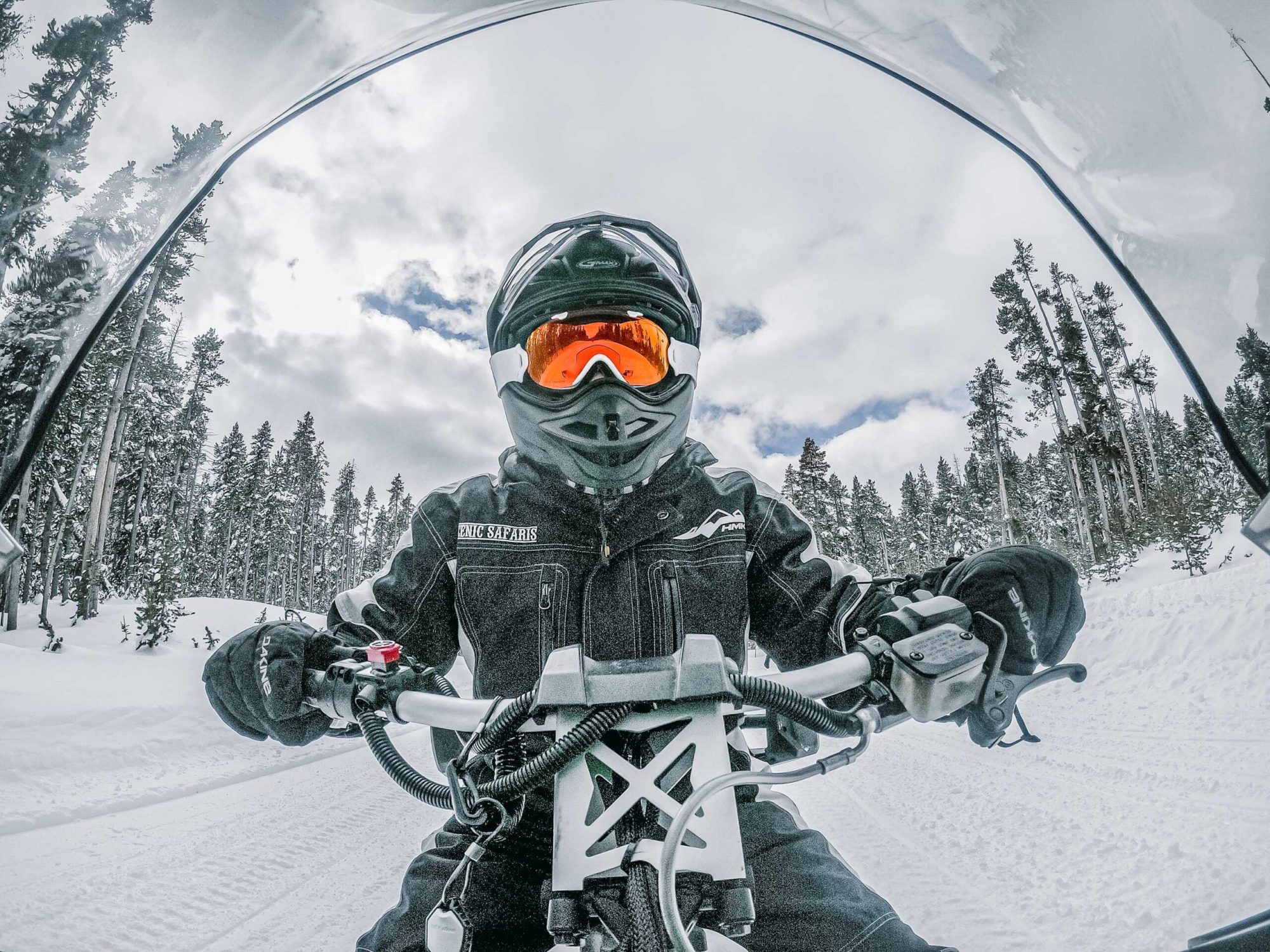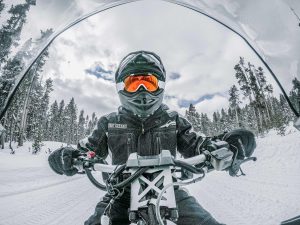Your Guide to Surviving an 8-Hour Snowmobile Expedition Through Yellowstone


Gearing up for an 8-hour snowmobile ride? That’s awesome.
We’re here to make sure you’ve got everything figured out. This handy guide is your go-to for all the ins and outs of what’s coming, from getting yourself ready for the big day to tackling any hiccups on the journey.
Understanding Snowmobile Expeditions
Snowmobiles are perfect for carving through Yellowstone’s magical winter landscape in a way that regular vehicles just can’t do. But even magic can fizzle if you find yourself shivering, starving, and just plain unhappy.
When preparing for an 8-hour snowmobile tour, there are several essential pieces of equipment you need to have. With the right equipment, you’ll be ready to tackle the adventure ahead with comfort and safety
Importance of a One-Piece Suit, Boots, and Helmet
Your safety and comfort are our top priorities. We’ll kit you out with everything you need — a snazzy one-piece suit, sturdy boots, and a solid helmet. The snowmobile suit offers complete protection from snow, wind, and cold temperatures, keeping you warm and dry. Our boots provide insulation and keep your feet cozy and out of the snow. And of course, we include a helmet. Not only does it protect you, but it also keeps your head nice and toasty by insulating heat.
Rest assured, we’ve got all the bases covered, except…
Understanding the Role of Warm Clothing and Accessories
…what you wear underneath. You’re on the hook to bring these with you when you arrive.
To keep yourself comfortable and safe, you need to wear warm layers that allow you to adapt to frozen temperatures. We recommend wearing thermal base layers to insulate you and regulate your body temperature. You also need a warm hat or beanie, gloves or mittens to protect your hands, and sunglasses to avoid snow blindness. Avoid cotton socks — trust us. You’ll want to choose non-cotton ones instead to keep your feet warm and wick away moisture.
As far as accessories go, we recommend you bring hand warmers, sunscreen, and lip balm, as well as a backpack or storage bag to carry any extra clothes and personal items.
Make sure you bring your driver’s license with you. You can’t ride without it.
What to Expect During the Snowmobile Expedition
Be prepared to witness breathtaking winter scenery, encounter wildlife, and have once-in-a-lifetime opportunities for sightseeing and photography. Our tours may include stops at iconic landmarks, thermal features, waterfalls, or panoramic viewpoints.
Also be prepared for changing weather conditions, such as snow, wind, and potentially low visibility. Our professional guides will provide safety instructions, snowmobile operation guidance, and information about the tour route in case of redirection.
Potential Challenges and How to Overcome Them
Riding a snowmobile for eight hours can be physically demanding, and it requires some serious prep work. It is crucial to prioritize rest, hydration and nutrition. By getting a good night’s sleep before the expedition, you can start the day with plenty of energy. Additionally, staying hydrated throughout the tour will help maintain stamina and prevent fatigue.
Food is important for keeping up with the snowmobile pack. We provide a quick to-go snack in the morning and sandwiches for lunch to keep you energized throughout the day. However, any additional food or snacks must be brought by you.
Tips for First-Time Snowmobilers:
Keep Your Cell Phone Warm and Dry
As a first-time snowmobiler, it’s important to keep your cell phone warm and dry. The cold temperatures and snow can quickly drain your phone’s battery and potentially damage it. To avoid any mishaps, store your phone in a waterproof bag or pouch and make sure it is securely tucked away in an insulated pocket on your gear. This will ensure that you have access to your phone throughout the tour for emergencies or capturing those incredible moments on camera.
Don’t Approach the Wildlife – Keep Your Distance
One of the most critical rules to follow when out there in the snowy wilderness should seem obvious to most people, but is so important that we would like to reiterate.
Do Not Approach The Wildlife!!!
Look. We get it. Those big fluffy bison look friendly enough to pet, but they’re wild animals with wild temperament. Not to mention that many of the animals you may see on the tour have the strength and willingness to flip over a snowmobile should they ever want to — our job is to not give them a reason to want to.
Keeping your distance helps prevent any hazardous situations and ensures both your safety and the well-being of the animals. It’s important to remember that animals are wild creatures and may see humans as a threat, which can lead to unpredictable behavior. So it is always better to observe wildlife from a distance, use binoculars or your camera’s zoom for close-up views.
This is the Time to Ask Questions.
We can only cover so much in one article. So if you have any further questions about what you need to bring, or what you can expect, please reach out to our team at ss.info@aramark.com. We’re pretty quick about responding, so ask away!
